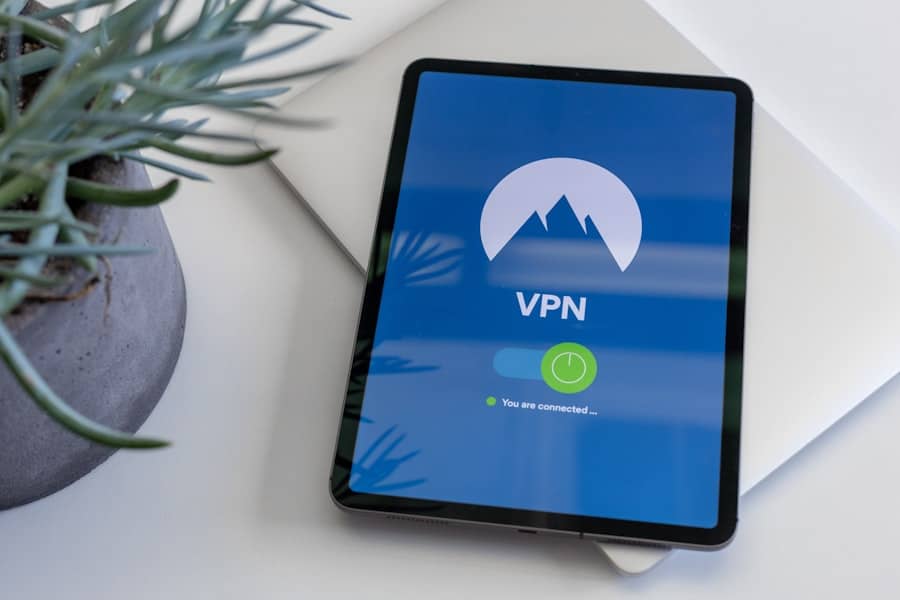A zero-day attack, also known as a zero-day exploit, is a cyber attack that exploits a previously unknown vulnerability in computer software or hardware. The term “zero-day” refers to the fact that the attack occurs on the same day the vulnerability is discovered, leaving no time for the targeted entity to prepare or defend against it. These attacks are particularly dangerous due to their unexpected nature and the lack of available defenses.
Zero-day attacks function by exploiting security flaws that have not yet been identified or patched by the software or hardware vendor. Cybercriminals discover these vulnerabilities through research, reverse engineering, or by purchasing information on the black market. Once identified, they develop and deploy malicious code to exploit the vulnerability.
This can result in unauthorized access to sensitive data, system failures, or complete control of the targeted system. The absence of patches or updates to address the unknown vulnerability makes defending against such attacks extremely challenging. These attacks can target various types of software and hardware, including operating systems, web browsers, and mobile applications.
They can be delivered through multiple vectors, such as phishing emails, malicious websites, or infected files. Successful zero-day attacks can have severe consequences for victims, including financial losses, reputational damage, and legal ramifications. Understanding the mechanics and potential impact of zero-day attacks is essential for organizations and individuals to protect themselves against this evolving threat.
Key Takeaways
- 0 Day attacks are cyber attacks that target vulnerabilities that are unknown to the software vendor and have no patch available.
- 0 Day attacks are a growing concern in cybersecurity due to their ability to exploit unknown vulnerabilities and bypass traditional security measures.
- Real-life examples of 0 Day attacks include Stuxnet and WannaCry, which caused widespread damage and financial losses.
- Strategies for defending against 0 Day attacks include network segmentation, application whitelisting, and regular security updates.
- Vulnerability management plays a crucial role in staying ahead of 0 Day threats by identifying and patching vulnerabilities before they can be exploited.
The Growing Concern: Why 0 Day Attacks Are a New Threat to Cybersecurity
In recent years, 0 day attacks have become a growing concern for cybersecurity professionals and organizations around the world. The increasing reliance on digital technologies and the interconnected nature of the internet have created a fertile ground for cybercriminals to exploit unknown vulnerabilities for their malicious purposes. This has led to a rise in the frequency and sophistication of 0 day attacks, making them a new and significant threat to cybersecurity.
One of the main reasons why 0 day attacks are a growing concern is the speed at which they can be launched and exploited. Unlike traditional cyber attacks that rely on known vulnerabilities, 0 day attacks take advantage of vulnerabilities that have not yet been discovered or patched. This gives cybercriminals a significant advantage, as they can exploit these vulnerabilities before security patches or updates are available.
As a result, organizations and individuals are left vulnerable to attacks that they may not even be aware of until it’s too late. Another reason for the growing concern around 0 day attacks is the potential impact they can have on their victims. Because these attacks target unknown vulnerabilities, they can be particularly difficult to detect and defend against.
This can lead to significant financial and reputational damage for organizations, as well as potential legal implications. Additionally, 0 day attacks can be used for espionage, sabotage, or other malicious purposes, posing a serious threat to national security and public safety. As such, the growing concern around 0 day attacks underscores the need for proactive measures to defend against this new and evolving threat to cybersecurity.
The Impact of 0 Day Attacks: Real-Life Examples and Consequences

The impact of 0 day attacks can be severe and far-reaching, as demonstrated by several real-life examples that have made headlines in recent years. One notable example is the Stuxnet worm, which was discovered in 2010 and targeted Iran’s nuclear facilities. The worm exploited multiple zero-day vulnerabilities in Microsoft Windows and Siemens supervisory control and data acquisition (SCADA) systems to infiltrate and sabotage the facilities’ centrifuges.
The attack was highly sophisticated and had significant consequences, causing physical damage to the centrifuges and disrupting Iran’s nuclear program. Another real-life example of the impact of 0 day attacks is the WannaCry ransomware outbreak in 2017. The ransomware exploited a vulnerability in Microsoft’s Server Message Block (SMB) protocol to spread rapidly across the globe, infecting hundreds of thousands of computers in over 150 countries.
The attack caused widespread disruption to businesses and critical infrastructure, including healthcare systems, financial institutions, and government agencies. The financial cost of the attack was estimated to be in the billions of dollars, making it one of the most damaging cyber attacks in history. These real-life examples highlight the devastating consequences that 0 day attacks can have on organizations and individuals.
From physical damage to critical infrastructure to widespread financial and operational disruption, the impact of these attacks can be catastrophic. As such, it is crucial for organizations to understand the potential consequences of 0 day attacks and take proactive measures to defend against them.
Unleashing the Power of Prevention: Strategies for Defending Against 0 Day Attacks
| Prevention Strategy | Effectiveness |
|---|---|
| Application Whitelisting | High |
| Network Segmentation | Medium |
| Vulnerability Patching | High |
| User Training and Awareness | Low |
Defending against 0 day attacks requires a proactive and multi-layered approach that leverages a combination of technical controls, security best practices, and user awareness. One key strategy for defending against 0 day attacks is to keep software and hardware up to date with the latest security patches and updates. This can help mitigate the risk of exploitation by closing known vulnerabilities that could be targeted by cybercriminals.
Additionally, organizations should implement robust endpoint protection solutions, such as antivirus software, intrusion detection systems, and firewalls, to detect and block malicious activity. Another important strategy for defending against 0 day attacks is to implement strong access controls and least privilege principles. This involves restricting user access to sensitive systems and data based on their roles and responsibilities, as well as implementing multi-factor authentication to prevent unauthorized access.
By limiting the attack surface and reducing the potential impact of a successful attack, organizations can strengthen their defenses against 0 day threats. Furthermore, organizations should prioritize security awareness training for employees to help them recognize and respond to potential 0 day threats. This includes educating users about phishing scams, social engineering tactics, and other common attack vectors used by cybercriminals to exploit vulnerabilities.
By empowering employees to be vigilant and proactive in their approach to cybersecurity, organizations can create a strong human firewall against 0 day attacks.
The Role of Vulnerability Management: How Organizations Can Stay Ahead of 0 Day Threats
Vulnerability management plays a critical role in helping organizations stay ahead of 0 day threats by identifying, prioritizing, and remediating potential security weaknesses before they can be exploited by cybercriminals. This involves conducting regular vulnerability scans and assessments to identify known vulnerabilities in software, hardware, and network infrastructure. By leveraging automated scanning tools and threat intelligence feeds, organizations can gain visibility into their attack surface and prioritize remediation efforts based on the severity of each vulnerability.
In addition to vulnerability scanning, organizations should establish a formal patch management process to ensure that security updates are applied in a timely manner. This involves testing patches in a controlled environment before deploying them to production systems to minimize the risk of disruption. By maintaining an up-to-date inventory of software and hardware assets and tracking patch compliance across the organization, organizations can reduce their exposure to 0 day attacks.
Furthermore, organizations should consider implementing a vulnerability disclosure program to encourage responsible security research and reporting of potential 0 day vulnerabilities. By establishing clear guidelines for researchers to report vulnerabilities without fear of legal repercussions, organizations can proactively address security issues before they can be exploited by malicious actors. This can help foster collaboration between security researchers and organizations to collectively defend against 0 day threats.
Collaboration and Information Sharing: Building a Stronger Defense Against 0 Day Attacks

Industry-Specific Information Sharing
One way organizations can collaborate is through industry-specific information sharing groups or forums. These platforms enable the exchange of threat intelligence, best practices, and lessons learned from 0-day attacks. By sharing insights into emerging threats and attack techniques, organizations can collectively strengthen their defenses against common adversaries.
Formalized Threat Intelligence Sharing Programs
Organizations should also consider participating in formalized threat intelligence sharing programs with trusted partners, government agencies, or industry alliances. These programs provide access to timely and actionable threat intelligence, helping organizations identify potential 0-day threats and take proactive measures to defend against them. By leveraging shared threat intelligence feeds and indicators of compromise (IOCs), organizations can enhance their ability to detect and respond to emerging threats in real-time.
Collaboration with Security Vendors and Researchers
Collaboration with security vendors and researchers can help organizations gain access to advanced threat detection capabilities and expertise in identifying potential 0-day vulnerabilities. By partnering with trusted security vendors and participating in bug bounty programs or responsible disclosure initiatives, organizations can tap into a global network of security experts who can help identify and address potential security weaknesses before they can be exploited by cybercriminals.
The Future of Cybersecurity: Adapting to the Evolving Threat Landscape
As the threat landscape continues to evolve, the future of cybersecurity will require organizations to adapt their defenses against emerging threats such as 0 day attacks. This will involve leveraging advanced technologies such as artificial intelligence (AI), machine learning (ML), and behavioral analytics to detect and respond to unknown threats in real time. By analyzing patterns of behavior and identifying anomalies that may indicate potential 0 day attacks, organizations can enhance their ability to defend against sophisticated adversaries.
Additionally, the future of cybersecurity will require a shift towards proactive defense strategies that focus on threat hunting, continuous monitoring, and rapid incident response. This involves actively searching for signs of compromise within an organization’s network and systems to identify potential 0 day threats before they can cause significant damage. By adopting a proactive stance towards cybersecurity, organizations can stay ahead of emerging threats and minimize their impact on operations.
Furthermore, the future of cybersecurity will require increased collaboration between public and private sector entities to address common threats such as 0 day attacks. This includes sharing threat intelligence, best practices, and resources to collectively defend against sophisticated adversaries who may exploit unknown vulnerabilities for malicious purposes. By fostering collaboration between government agencies, industry partners, and security researchers, organizations can build a stronger defense against emerging threats in an increasingly interconnected digital ecosystem.
In conclusion, understanding the nature of 0 day attacks, their growing concern in cybersecurity, their real-life impact on organizations, as well as strategies for prevention are crucial for defending against this evolving threat landscape. By leveraging vulnerability management practices, collaboration with industry peers and information sharing initiatives while adapting to advanced technologies in cybersecurity defense strategies will help organizations stay ahead of potential 0 day threats in the future.
FAQs
What is a 0 day attack?
A 0 day attack refers to a cyber attack that exploits a previously unknown vulnerability in a software or hardware system. The term “0 day” comes from the fact that the attack occurs on the same day that the vulnerability is discovered, giving the targeted organization or system zero days to prepare or defend against the attack.
How does a 0 day attack work?
In a 0 day attack, the attacker takes advantage of a vulnerability in a system that has not yet been discovered or patched by the software or hardware vendor. This allows the attacker to exploit the vulnerability to gain unauthorized access, steal data, or disrupt the targeted system.
What are the potential impacts of a 0 day attack?
The potential impacts of a 0 day attack can be severe, including unauthorized access to sensitive data, financial losses, disruption of critical systems, and damage to an organization’s reputation. Additionally, 0 day attacks can be used as a means to deliver malware or ransomware, further compromising the targeted system.
How can organizations defend against 0 day attacks?
Defending against 0 day attacks requires a proactive approach to cybersecurity, including regular software and hardware updates, implementing strong access controls, using intrusion detection systems, and conducting regular security assessments. Additionally, organizations can benefit from threat intelligence and information sharing to stay informed about emerging vulnerabilities and potential 0 day attacks.











Leave a Reply